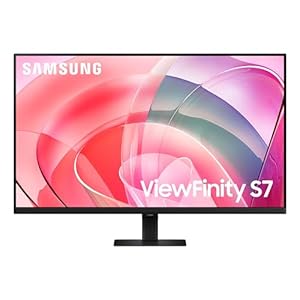Over the previous few years, the idea of “AI PCs” has gone from sounding like a determined try and revive the pc business, to one thing that would really change the way in which we dwell with our PCs. To recap, an AI PC is any system operating a CPU that is geared up with a neural processing unit (NPU), which is specifically designed for AI workloads. NPUs have been round for years in cellular {hardware}, however AMD was the primary firm to deliver them to x86 PCs with the Ryzen Pro 7040 chips.
Now with its Ryzen AI 300 chips, AMD is making its greatest push but for AI PCs — one thing that would repay sooner or later as we see extra AI-driven options like Microsoft’s Recall. (Which, it is value noting, has additionally been dogged with privacy concerns and subsequently delayed.) To get a greater sense of how AMD is approaching the AI PC period, I chatted with Ryzen AI lead Rakesh Anigundi, the Ryzen AI product lead and Jason Banta, CVP and GM of Shopper OEM. You may take heed to the complete interview on the Engadget Podcast.
My most urgent query: How does AMD plan to get builders onboard with constructing AI-powered options? NPUs aren’t precisely a promoting level if no one is making apps that use them, in any case. Anigundi mentioned he was nicely conscious that builders broadly “simply need issues to work,” so the corporate constructed a technique round three pillars: A strong software program stack; performant {hardware}; and bringing in open-source options.
“We’re of the philosophy that we do not wish to invent requirements, however comply with the requirements,” Anigundi mentioned. “That is why we’re actually double clicking on ONNX, which is a cross platform framework to extract the utmost efficiency out of our system. That is very carefully aligned with how we’re working with Microsoft, enabling their subsequent era of experiences and likewise OEMs. And on the opposite aspect, the place there’s a whole lot of innovation taking place with the smaller ISVs [independent software vendors], this technique works out very nicely as nicely.”
He factors to AMD’s recently launched Amuse 2.0 beta as a technique the corporate is displaying off the AI capabilities of its {hardware}. It is a easy program for producing AI photos, and runs solely in your NPU-equipped system, without having to succeed in out to OpenAI’s DallE or Google’s Gemini within the cloud.
AMD’s Banta reiterated the necessity for a fantastic device set and software program stack, however he identified that the corporate additionally works carefully with companions like Microsoft on prototype {hardware} to make sure the standard of the shopper expertise. “[Consumers] can have all of the {hardware}, they will have all of the instruments, they will have all of the foundational fashions, however making that finish buyer expertise nice requires a whole lot of direct one to 1 time between us and people ISV companions.”
On this case, Banta can be referring to AMD’s relationship with Microsoft in terms of constructing Copilot+ experiences for its techniques. Whereas we have seen a handful of AI options on the primary batch of Qualcomm Snapdragon-powered Copilot+ machines, just like the new Surface Pro and Surface Laptop, they are not out there but on Copilot+ techniques operating x86 chips from AMD and Intel.
“We’re making that have good,” Banta mentioned. At this level, you may think about Ryzen AI 300 machines to be “Copilot+ prepared,” however not but absolutely Copilot+ succesful. (As I discussed in my Floor Professional evaluation, Microsoft’s present AI options are pretty primary, and that possible will not change till Recall is formally launched.)
As for those rumors around AMD developing an Arm-based CPU, the corporate’s executives, naturally, did not reveal a lot. “Arm is an in depth accomplice of AMD’s,” Banta mentioned. “We work collectively on various options throughout our roadmaps… So far as [the] total CPU roadmap, I am unable to actually speak about what’s coming across the nook.” However on condition that the identical rumor factors to NVIDIA additionally creating its personal Arm chip, and contemplating the astounding efficiency we have seen from Apple and Qualcomm’s newest cellular chips, it would not be too shocking to see AMD go down the identical Arm-paved street.
Trending Merchandise

SAMSUNG FT45 Series 24-Inch FHD 1080p Computer Monitor, 75Hz, IPS Panel, HDMI, DisplayPort, USB Hub, Height Adjustable Stand, 3 Yr WRNTY (LF24T454FQNXGO),Black

KEDIERS ATX PC Case,6 PWM ARGB Fans Pre-Installed,360MM RAD Support,Gaming 270° Full View Tempered Glass Mid Tower Pure White ATX Computer Case,C690

ASUS RT-AX88U PRO AX6000 Dual Band WiFi 6 Router, WPA3, Parental Control, Adaptive QoS, Port Forwarding, WAN aggregation, lifetime internet security and AiMesh support, Dual 2.5G Port

Wi-fi Keyboard and Mouse Combo, MARVO 2.4G Ergonomic Wi-fi Pc Keyboard with Telephone Pill Holder, Silent Mouse with 6 Button, Appropriate with MacBook, Home windows (Black)

Acer KB272 EBI 27″ IPS Full HD (1920 x 1080) Zero-Frame Gaming Office Monitor | AMD FreeSync Technology | Up to 100Hz Refresh | 1ms (VRB) | Low Blue Light | Tilt | HDMI & VGA Ports,Black

Lenovo Ideapad Laptop Touchscreen 15.6″ FHD, Intel Core i3-1215U 6-Core, 24GB RAM, 1TB SSD, Webcam, Bluetooth, Wi-Fi6, SD Card Reader, Windows 11, Grey, GM Accessories

Acer SH242Y Ebmihx 23.8″ FHD 1920×1080 Home Office Ultra-Thin IPS Computer Monitor AMD FreeSync 100Hz Zero Frame Height/Swivel/Tilt Adjustable Stand Built-in Speakers HDMI 1.4 & VGA Port

Acer SB242Y EBI 23.8″ Full HD (1920 x 1080) IPS Zero-Body Gaming Workplace Monitor | AMD FreeSync Expertise Extremely-Skinny Trendy Design 100Hz 1ms (VRB) Low Blue Gentle Tilt HDMI & VGA Ports







